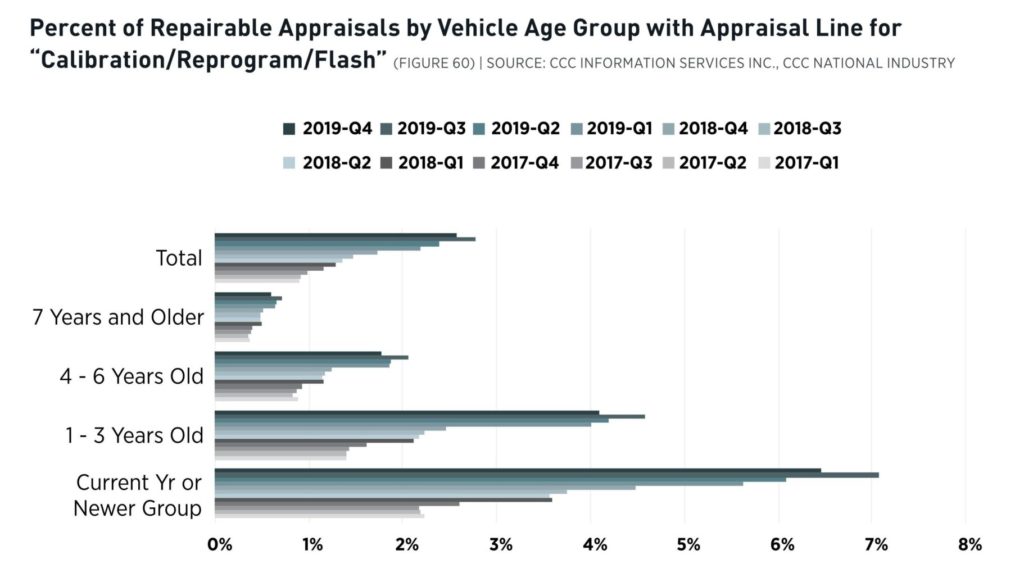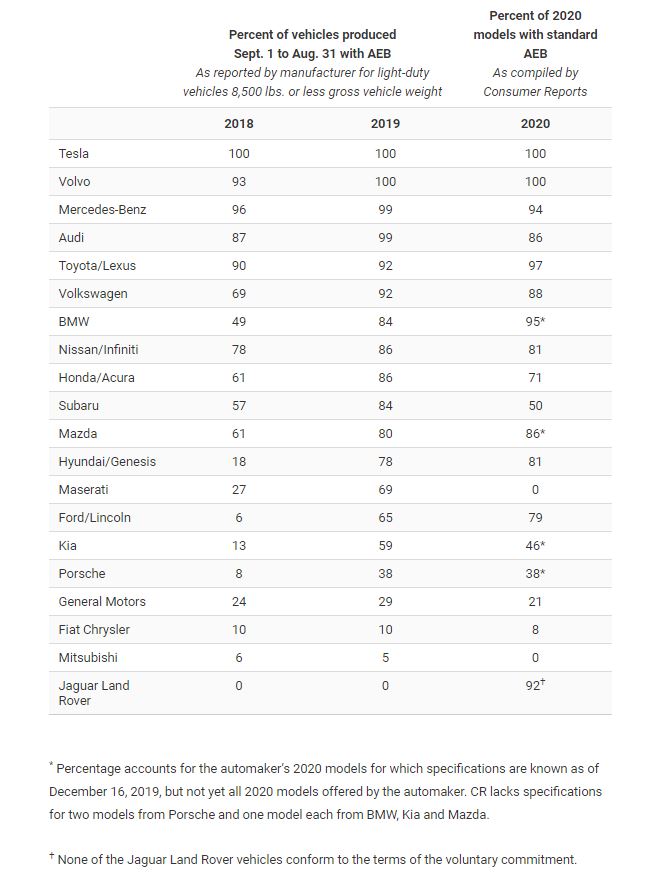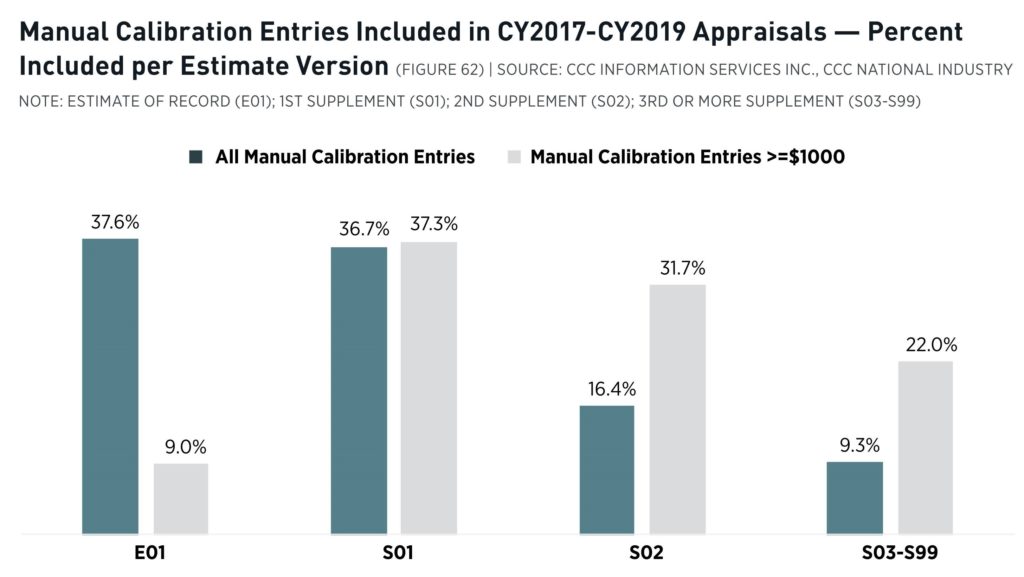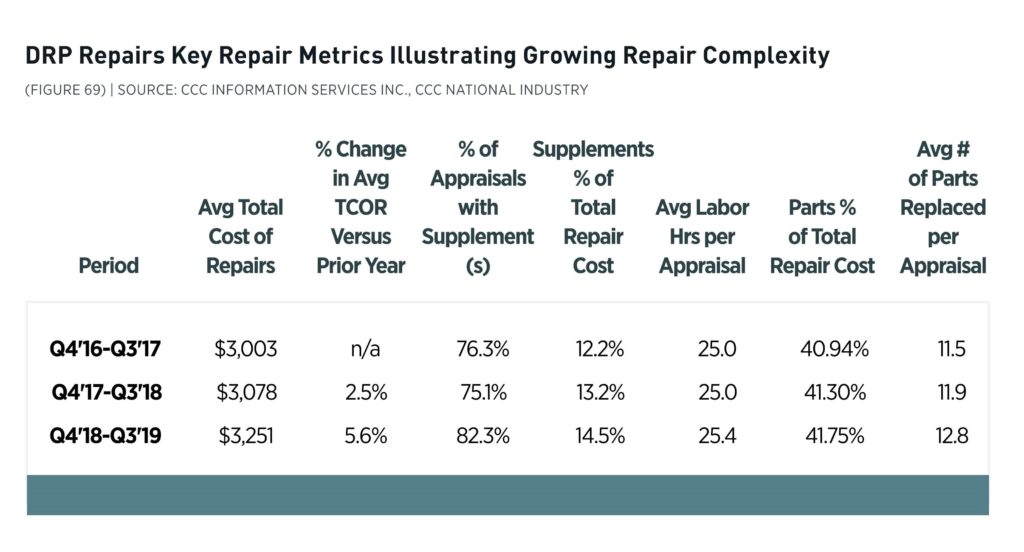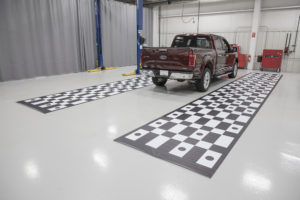
CCC: Calibration still rare on estimates, rarer still on initial sheets
By onBusiness Practices | Market Trends | Repair Operations | Technology
Less than 7 percent of CCC estimates for 2019 or newer vehicles included a manual calibration entry in the fourth quarter of 2019, according to CCC’s 2020 “Crash Course.”
The March document indicated that not all supplements for fourth quarter sheets might have come in as of the time CCC conducted the research, and this proportion might grow. However, only about 7 percent of current-year or newer appraisals in the third quarter carried an “additional entry for ‘calibration,’ ‘reprogram,’ ‘flash,’ etc.,” according to CCC.
On the whole, calibration entries only appeared on 2.6 percent of appraisals in the fourth quarter of 2019, which CCC noted was an increase from 0.9 percent in the first quarter of 2017. 2.8 percent of all appraisals had a calibration entry in the third quarter of 2018.
CCC director and analyst Susanna Gotsch has observed in discussing similar research last year that repairers might be performing calibrations but not including them on estimates.
“I think it’s important to note, that just like with the scan entries – there may be instances where fees for scan or calibration are added to a claim folder or charges submitted to a carrier from a shop, but not entered as lines in the appraisal, so the data would not be captured in our analysis,” she wrote in 2019. (Emphasis Gotsch’s.) “The percentage of claims with those types of entries is likely higher for both scan and calibrate type operations.”
It’s also possible that repairers and insurers are using terms for calibration which were overlooked by the analysis. And some parts might not require calibration at all; a recent GM document notes that many vehicles’ park-assist sensors don’t need a calibration.
But this CCC late-model data also might indicate that some calibrations which OEM procedures say should be done weren’t done. Here’s a couple of items to consider.
According to a joint November 2019 news release from AAA, Consumer Reports, J.D. Power and the National Safety Council, 93 percent of new vehicles offer at least one piece of ADAS.
More than 50 percent of all cars produced by 15 automakers between Sept. 1, 2018, and Aug. 31, 2019, contained at least the ADAS feature autobraking, according to an Insurance Institute for Highway Safety look at NHTSA data. Eleven of these OEMs — — including popular brands like Nissan/Infiniti, Honda/Acura, Subaru, and Toyota/Lexus — built autobraking into at least 80 percent of all units they produced that year.
Do a little napkin math using the IIHS proportions and GoodCarBadCar OEM U.S. sales data. Just those four Asian manufacturers alone put autobraking on more than 30 percent of all U.S. vehicles built in the year ending Aug. 31, 2019 — essentially, the 2019 model year CCC was studying.
Incomplete initial estimates
The CCC data also indicates that the initial estimates are failing to capture necessary calibration more than 60 percent of the time. More than 25 percent weren’t even captured until Supplement 2 or later.
“Completing the proper diagnostics, determining which components are included in the repair that might require calibration, and reviewing the OEM repair procedures can help a repairer incorporate the calibration into the repair plan up front,” CCC wrote. “These steps could potentially help avoid added costs and repair time identified later in supplements, that can also lead to lower customer satisfaction with the repair. Analysis of calibration entries included in appraisals between CY 2017 and CY 2019 suggest the industry has room for improvement here — less than 40 percent were included in the original estimate of record, and of those calibration with fees of $1000 or more, only 9 percent were included on the original E01.”
If insurers and even repairers are shifting initial, pre-blueprinting estimates to a more digital process anyway, an easy and responsible step might be to automate an alert warning the customer of the chance that additional repairs are likely.
After all, initial estimates in general miss something more than 82 percent of the time, judging by a separate CCC study of DRP supplement rates for the year ending Sept. 30, 2019.
“The percent of vehicle repairs with at least one supplement has grown from 76 percent to 82 percent over the three year period from Q4’16-Q3’17 to Q4’18-Q3’19; the share of total repair cost added during supplements grew from 12 percent to 14.5 percent,” CCC wrote.
Correction: An earlier version of this article incorrectly represented the percentage of third-quarter 2019 estimates for current-year or newer vehicles CCC said had line items containing terms like “‘calibration,’ ‘reprogram,’ ‘flash,’ etc.” A little more than 7 percent of the sheets had entries like that. The article has since been corrected to reflect this.
More information:
NASTF OEM repair procedure portal
Images:
Calibration mats are positioned along the left and right sides of the 2015 Ford F-150 to recalibrate the surround view cameras. (Provided by I-CAR)
Only around 7 percent of current-year or newer appraisals in the third quarter of 2019 carried an “additional entry for ‘calibration,’ ‘reprogram,’ ‘flash,’ etc.,” according to CCC’s “Crash Course.” (Provided by CCC)
For 15 automakers, it was better than even money that a car produced between Sept. 1, 2018, and Aug. 31, 2019, contained lifesaving autobraking technology, according to an Insurance Institute for Highway Safety report Dec.; 17, 2019. For 11 of them, the odds were 80-20 or better. Six automakers — including Toyota/Lexus and Volkswagen were at 90-100 percent. (Provided by IIHS)
CCC data published in the 2020 “Crash Course” indicates initial estimates are failing to capture necessary calibration more than 60 percent of the time. More than 25 percent weren’t even captured until Supplement 2 or later. (Provided by CCC)
Initial estimates in general miss something more than 82 percent of the time, judging by a CCC study of DRP supplement rates for the year ending Sept. 30, 2019. (Provided by CCC)

